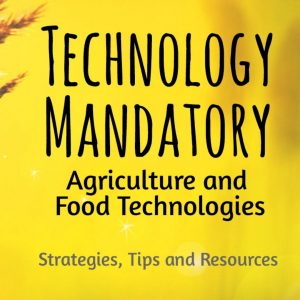Description
Introducing our new Foodborne Illness Match Up Teaching Resource Activity – a fun and interactive way for teachers to educate their students about the causes, symptoms and ways to avoid foodborne illnesses. This teaching resource is specially designed for food technology and can be easily integrated into the classroom curriculum.
Our Foodborne Illness Match Up Activity includes a PowerPoint presentation, Posters, a set of cards and a worksheet which address common foodborne illnesses, their symptoms, causes, and ways to avoid them. The activity is simple to set up and can be played as a whole class or in groups, making it perfect for both in-class and remote learning environments.
With this teaching resource, teachers can help their students to understand the importance of safe food handling practices, including proper food storage, cooking, and serving. Students will also learn how to recognise the signs and symptoms of common foodborne illnesses, such as Salmonella, E. coli, and Listeria, and how to prevent the spread of these illnesses.
Our Foodborne Illness Match Up Teaching Resource Activity is not only informative but also engaging and entertaining, making it an excellent way to promote student learning and retention.
The Foodborne Illness Match Up Teaching Resource Activity is a must-have for any teacher looking to educate their students about the risks and prevention of foodborne illnesses in a fun and effective way. Order yours today and make a difference in your students’ health and wellbeing!
Pack includes:
- 7 slide Foodborne Illnesses Match Up PowerPoint.
- 6 Foodborne Illnesses Match Up Posters.
- 24 Foodborne Illnesses Match Up Cards.
- 7-page Foodborne Illnesses Match Up Worksheet.
- Lesson plan with teacher instructions
NSW FOOD TECHNOLOGY STAGE 6 SYLLABUS (2013)
Preliminary Food Quality
P4.1 selects appropriate equipment, applies suitable techniques and utilises safe and hygienic practices when handling food
Students learn about:
Safe storage of food
- methods of storing foods to maintain quality such as dry storage, cold storage and freezing
- safe and hygienic work practices when handling food
Students learn to:
- describe methods of storing foods to maintain sensory characteristics and ensure safety
NSW FOOD TECHNOLOGY 7–10 SYLLABUS (2019)
FT5-2 identifies, assesses and manages the risks of injury and WHS issues associated with the handling of food
- demonstrate safe and hygienic work practices, for example: (ACTDEK045, ACTDEP050)
- personal hygiene
- food safety, eg the food danger zone, cross-contamination
- safe work practices
- use of personal protective equipment (PPE)
NSW NESA TECHNOLOGY MANDATORY YEARS 7–8 SYLLABUS (2017)
Agriculture and Food Technologies
- identify and apply safe and ethical work practices, for example: DT
– correct use of tools and equipment
– food safety and hygiene practices
NSW Hospitality Curriculum Framework Stage 6 Syllabus
SITXFSA001 Use hygienic practices for food safety
-food contamination and foodborne illness
ACARA Australian Curriculum Design & Technologies YRS 9-10
Knowledge and understanding
- Investigate and make judgements on how the principles of food safety, preservation, preparation, presentation and sensory perceptions influence the creation of food solutions for healthy eating(ACTDEK045)
WA SCSA ATAR Food Science & Technology YR11 & YR12 ATAR
Outcome 4
- understand the importance of safe, sustainable practices when developing and using food-related technologies.
VCAA VIC VCE Food Studies 2020
Victorian Certificate of Education Food Studies Study Design
Unit 3: Food in Daily Life
Key skill
- use equipment and techniques appropriately, justify and apply principles of safe and hygienic food handling practices in the prevention of food poisoning, and demonstrate organisational and technical skills in relation to the preparation, cooking and presentation of nutritious meals in a range of practical activities.
QCAA Food & Nutrition General Senior Syllabus 2019
QLD Food & Nutrition 2019 v1.1 General Senior Syllabus
3.5 Topic 3: Labelling and food safety
- explain critical control points (CCPs) relating to food safety and potential sources of contamination, including biological hazards, e.g. pathogenic microorganisms, insects, animals.
SACE SA Food & Hospitality Stage 1 and Stage 2
SA South Australian Certificate of Education
Food and Hospitality
Area of Study 4: Food and Safety
This area of study could include topics such as the following:
- occupational health and safety
- consumer protection and the rights of individuals
- safe food practices.
TASC TAS Food and Cooking Essentials: FCE110114 Level 1
Tasmanian Government Department of Education
Food and Cooking Essentials
Learning Outcome
- work safely and hygienically when storing, preparing and handling food
VET UNIT SITXFSA001 Use hygienic practices for food safety
-food contamination and foodborne illness
QCAA Food & Nutrition General Senior Syllabus 2019
QLD Food & Nutrition 2019 v1.1 General Senior Syllabus
3.5 Topic 3: Labelling and food safety
- explain critical control points (CCPs) relating to food safety and potential sources of contamination, including biological hazards, e.g. pathogenic microorganisms, insects, animals.
SACE SA Food & Hospitality Stage 1 and Stage 2
SA South Australian Certificate of Education
Food and Hospitality
Area of Study 4: Food and Safety
This area of study could include topics such as the following:
- occupational health and safety
- consumer protection and the rights of individuals
- safe food practices.
TASC TAS Food and Cooking Essentials: FCE110114 Level 1
Tasmanian Government Department of Education
Food and Cooking Essentials
Learning Outcome
- work safely and hygienically when storing, preparing and handling food
VET UNIT SITXFSA001 Use hygienic practices for food safety
-food contamination and foodborne illness
AQA Britain GCSE Food Preparation & Nutrition (8585)
3.4.1.4 Bacterial contamination
- the different sources of bacterial contamination
- the main types of bacteria which cause food poisoning
- the main sources and methods of control of different food poisoning bacteria types
- the general symptoms of food poisoning.
Only logged in customers who have purchased this product may leave a review.







 The Happiness Mission
The Happiness Mission







 Lovius Educational Consultancy
Lovius Educational Consultancy


Nicole (Verified user) –
Excellent resource